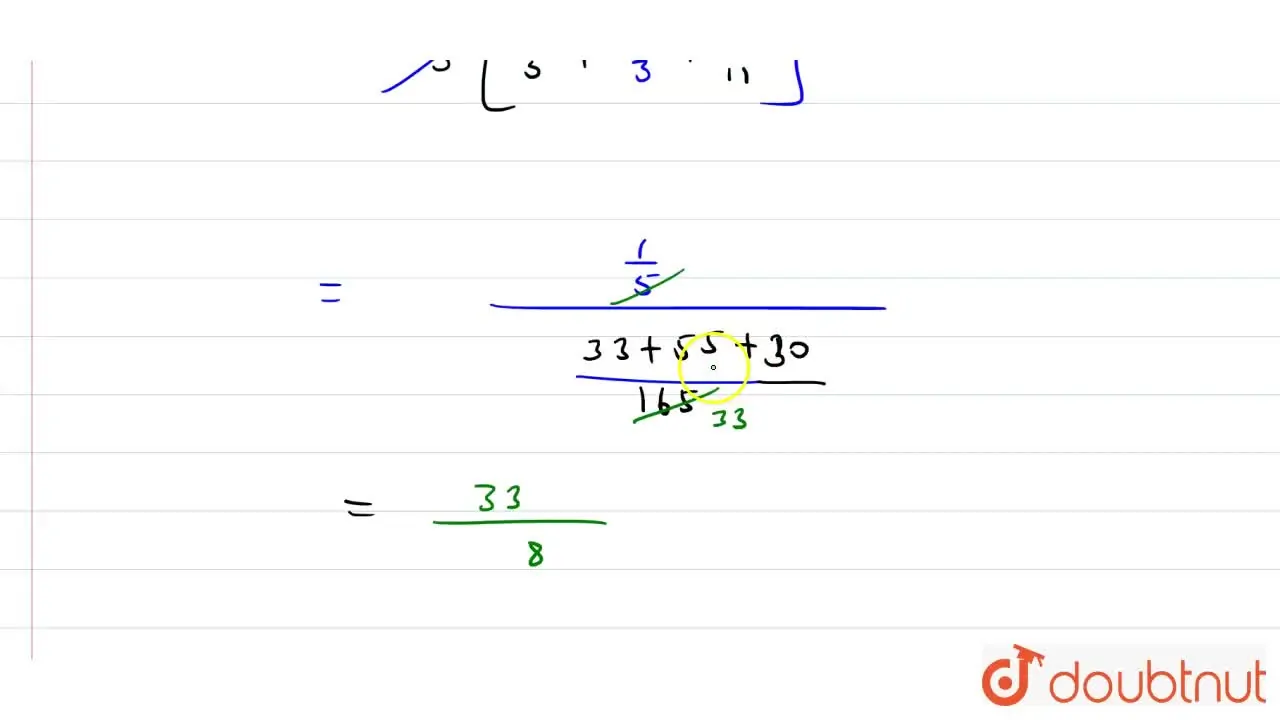Urn A contains 1 white, 2 black and 3 red balls, urn B contains 2 white, 1 black and 1 red balls, and urn C contains 4 white , 5 black and 3 red balls.
One urn is chosen at random and two balls are drawn. These happen to be one white and one red. What is the probability that they come from urn A?
Let E1,E2,E3 be the events that the balls are drawn from urn A, urn B and urn C respectively, and let E be the event that the balls drawn are one white and one red. Then, P(E1)=P(E2)=P(E3)=13.
P(E/E1)= probability that the balls drawn are one white and one red, given that the balls are from urn A
=.1C1×.3C1.6C2=315=15.
P(E/E2)= probability that the drawn are one white and one red,given that the balls are from urn B
=.2C1×.1C1.4C2=26=13
P(E/E3)= probability that the balls drawn are one white and one red, given that the balls are from urn C
=.4C1×.3C1.12C2=1266=211
Probability that the balls drawn are from urn A, it being given that the balls drawn are one white and one red
=P(E−1/E)
P(E/E1).P(E1)P(E/E1).P(E1)+P(E/E2).P(E2)+P(E/E3).P(E3)[by Bayes's theorem]
(15×13)(15×13)+(13×13)+(211×13)
=(115×495118)=33118.
Hence, the required probability is 33118.
Related Playlists
- BOOK - RS AGGARWALCHAPTER - BAYES'S THEOREM AND ITS APPLICATIONSEXERCISE - Exercise 3018videos
BAYES'S THEOREM AND ITS APPLICATIONS
- BOOK - RS AGGARWALCHAPTER - AREA OF BOUNDED REGIONS EXERCISE - Exercise 1739videos
AREA OF BOUNDED REGIONS
- BOOK - RS AGGARWALCHAPTER - BINARY OPERATIONSEXERCISE - Exercise 3B8videos
BINARY OPERATIONS
Similar Questions
Bag I contains 2 white, 1 black and 3 red balls, Bag II contains 3 white, 2 black and 4 red balls, Bag III contains 4 white, 3 black and 2 red balls. A bag is chosen at random and two balls are drawn from it. They happen to be one black and one red. What is the probability that they come from bag II ?
View SolutionUrn A contains 2 white, 1 black and 3 red balls, urn B contains 3 white, 2 black and 4 red balls and urn C contains 4 white, 3 black and 2 red balls. One urn is chosen at random and 2 balls are drawn at random from the urn. If the chosen balls happen to be red and black, what is the probability that both balls come from urn B?
View SolutionThere. are three boxes, the first one containing 1 white, 2 red -and 3 black balls, the second one containing 2 white, 3 red and 1 black ball and the third one containing 3 white, 1 red and 2 black balls. A box is chosen at random and from it two balls are drawn at random. One ball is red and the other, white. What is the probability that they come from the second box?
View SolutionThree identical urns contain red and black balls The fist urn contains 2 white and 3 black balls, the second urn 3 white and 2 black balls and the third urn 1 black and 4 white balls. An urn is chosen at random and a ball is drawn from it.If the all drawn is white, what is the probability that the first um is chosen?
View SolutionAn urn contains 4 white and 5 black balls, a second urn contains 5 white and 4 black balls. One ball is transferred from the first to second urn, then a ball is drawn from the second urn, what is the probability that it is white ?
View SolutionAn urn contains one black ball and one green ball. A second urn contains one white and one green ball. One ball is drawn at random from each urn.
What is the probability that both balls are of same colour?View SolutionAn urn contains one black ball and one green ball. A second urn contains one white and one green ball. One ball is drawn at random from each urn.
What is the probability that both balls are of same colour?View SolutionA bag A contains 2 white and 3 red balls and a bag B contains 4 white and 5 red and balls. One ball is drawn at random from one of the bags and is found to be red. Find the probability that it was drawn as red.
View SolutionA bag A contains 2 white and 3 red balls and a bag B contains 4 white and 5red balls. One ball is drawn at random from one of the bags and is found to be red. Find the probability that it was drawn as red.
View SolutionThree identical Urns I, ll and III contain 4 white and 3 red balls, 3 white and 7 red balls and 2 white and 3 red balls respectively. An Urn is chosen at random and a ball is drawn out of it at random. If the ball is found to be white, what is the probability that Urn ll was selected?
View Solution


